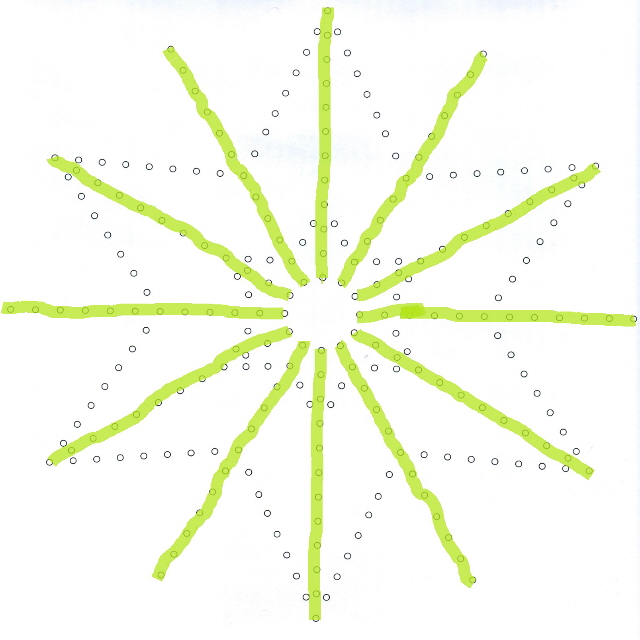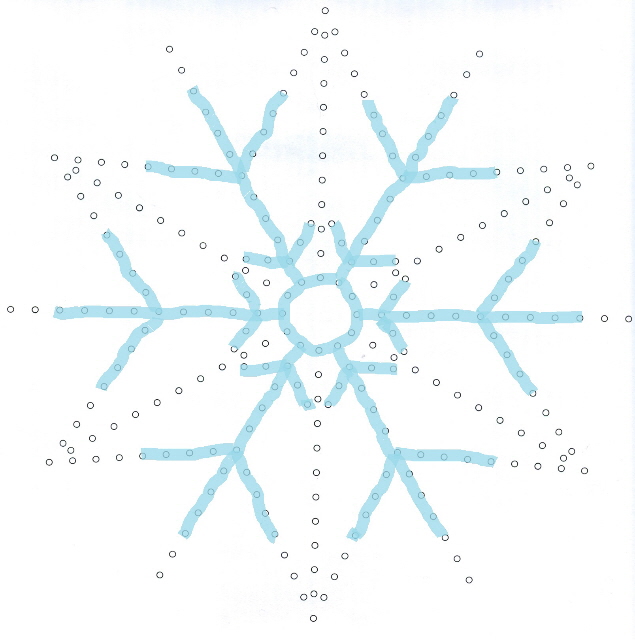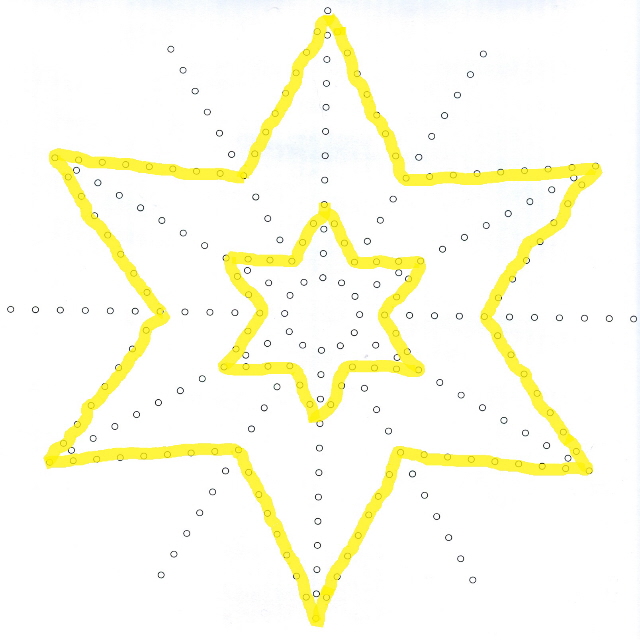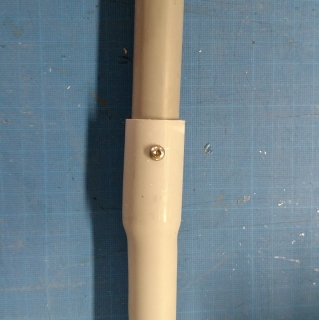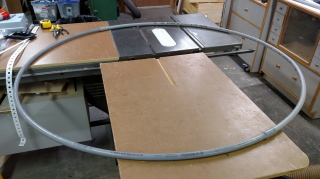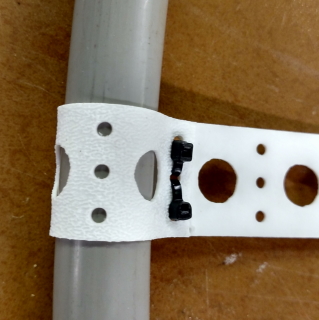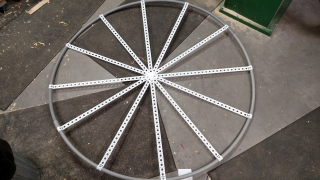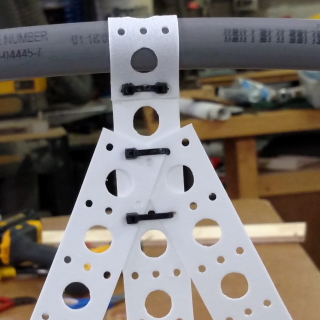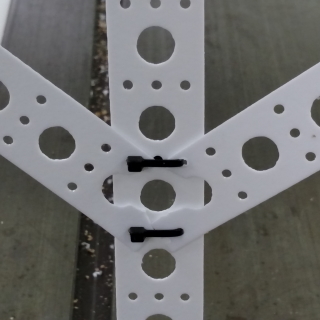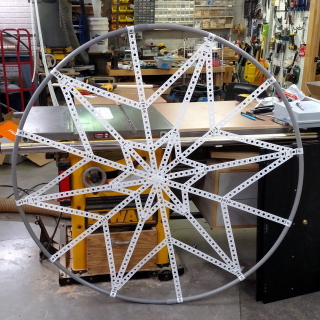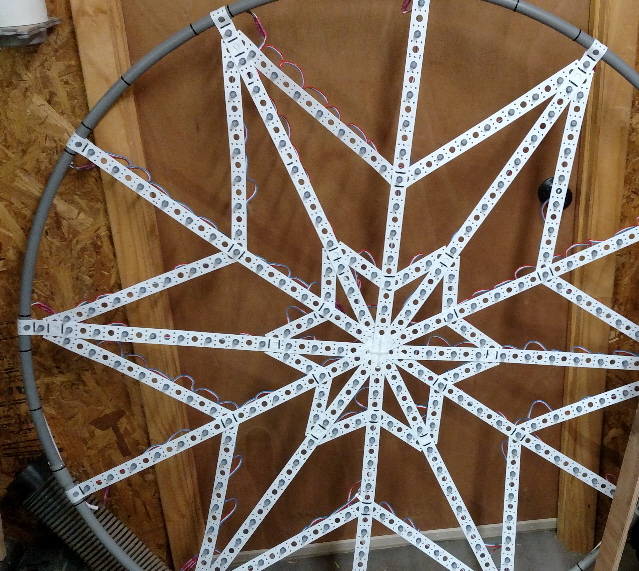StarFlake Spinner
The StarFlake Spinner was inspired by Brian Collins (bcstuff). The idea was to make a versatile prop using inexpensive materials in the true DIY spirit. This prop can be used as a Spinner, Snowflake, or (2) 6-point Stars with or without Rays
The materials needed to construct the unit are:
1/2" Grey PVC Pipe
Boscoyo or HolidayCoro Pixel Strips
Zip Ties
12mm Pixel Nodes (either Bullet or Square)
The design is very flexible to accommodate different sizes to suit your particular needs. The prop consists of an outer circle made of the Grey PVC pipe and Pixel Strips to make the designs inside. I made my mine to be 4'6" diameter to fit in a Gable on my house over a 2nd story window. You can adjust the diameter of the circle to fit your situation by changing the length of PVC pipe.
Start by determining the diameter of the StarFlake Spinner you wish to build. Use the basic geometry formula of Circumference = π * Diameter to determine the overall length of PVC pipe needed. (Do not forget to add back the length where the pipe slips together) For my prop the length was 169 3/4" total which I then constructed using 2 pieces of PVC 86 1/8" long (84 7/8" + 1 1/4" for the connection) I joined the two pieces of pipe together to form a circle and secured them with a small stainless steel screw at each joint.
Once the outer ring is formed you begin attaching the Boscoyo Pixel Strips to the ring, there will be a total of 6 strips going from side to side. I attached the first strip to the left of one of the connection points by wrapping it around the PVC pipe and connecting it to itself using zip ties in the supplied holes
Then pull the strip taunt (but not so tight it distorts the circle) and attach to the opposite side of the connection point on the other side of the ring and secure in the same manner. Continue this procedure for each of the remaining 5 strips. Once all 6 strips have been attached to the ring, slide them into equidistant positions around the ring to form the Spinner portion of the prop.
Ideally you should set your diameter so there are an odd numbers of holes in the pixel strips, then the center holes should align in the middle of the prop. This will also give you consistency so your Stars and Snowflake are symmetrical.
I used a CAD program to assist in laying out the next phase of the build. I am using 2" spacing for the pixels.
Once I had my layout finalized it was a matter of cutting the Pixel Strips to length and attaching them to the spokes of the spinner in the appropriate places. With a bit of luck you will be able to use zip ties through the existing holes in the Pixel Strips, however 1/8" holes can be easily drilled to connect the strips where the holes do not align.
Note that I cut away the area where a pixel would be inserted so I was only installing a pixel through a single layer of the Pixel Strip.
The final framework looked like this before installing the pixels.
Now to Add the Lights!
I found it best to start installing the lights at the outer tip on one of the Rays (not a Star Point). You can then install the lights towards the center and then come back out the adjacent ray. When you get back to the outer ring you will need to splice in wire to take you to the tip of the next Ray.
Work your way around the prop, when you complete the last Ray you should be able to continue on to the exterior Star. Again work your way around the prop and when you complete the outer Star you will need to splice in wire to continue on the inner Star to complete the prop. Make sure you think about Power and Data Injection points as needed by the pixels and controller that you are using. The finished prop should look something like this.
Good Luck and I hope this helps!
